#ANIMAL HISTORY
Text
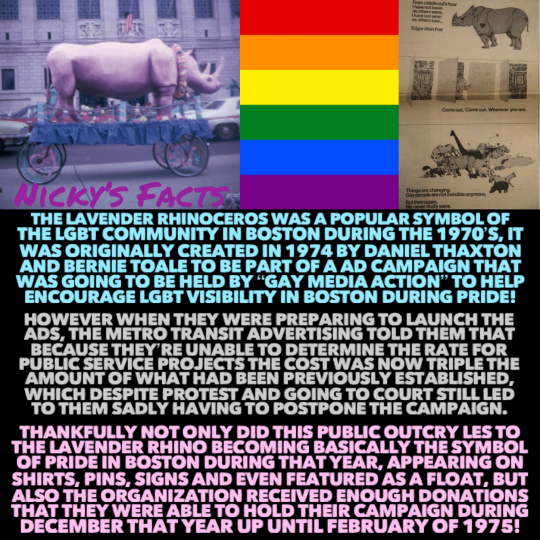
Rhino painted in lavender says gay rights!🦏
🏳️🌈💜🏳️⚧️
#history#lavender rhino#lgbt#boston#pride#american history#lgbt icons#symbols#1970s#bernie toale#lgbt history#daniel thaxton#pride month#lgbtq community#lesbian pride#purple#rhino#animal history#lesbian#gay#bisexual#transgender#united states#sappho#lgbt positivity#70s#nickys facts
59 notes
·
View notes
Text
For #WorldBinturongDay :

The Binturong (Arctictis binturong), Plate X in Joseph Wolf's Zoological Sketches Vol. 2, London, 1867. Via BHL.
"A fine male specimen of the Binturong was presented to the Zoological Society in 1855, by Mrs. Samuel Rawson, and lived in good health nearly eleven years in the Gardens. It is believed to have been the only example of this scarce animal ever exhibited alive in Europe."
#animals in art#animal holiday#european art#19th century art#Binturong#World Binturong Day#Joseph Wolf#natural history art#scientific illustration#book plate#historical sciart#British art#animal history#zoological illustration#ZSL#London Zoo
13 notes
·
View notes
Text
Jimmy the Raven
Jimmy the Raven (often referred to as Jimmy the Crow) was an expertly trained raven that starred in some of the most famous films of all time. Jimmy belonged to animal trainer Curley Twiford, and was “discovered” while Jimmy was riding on Twiford’s bulldog, Squeezit, along with two parakeets. Twiford once said training corvids were the easiest, and (of course) training cats were the most…

View On WordPress
#animal history#bird actor#birds in films#birds in hollywood#crow#famous animals#famous birds#frank capra#its a wonderful life#jimmy stewart#jimmy the crow#jimmy the raven#ravens in film#wizard of oz
12 notes
·
View notes
Text
“Necropsy,” the word, was invented to distinguish between the act of examining dead humans from that of examining dead animals. An autopsy would determine the cause of death of any animal, human or not, until the early 1800s, when a French doctor proposed “necropsy” for the nonhuman. All of us still die, but now we humans are autopsied and whales necropsied. Our exams involve the same process (opened up on the table) and end goal (to determine cause of death), but we are spared, at least etymologically, the suggestion of our corpsehood.
The word “necropsy” breaks down to “death” + “seeing”; “autopsy” to “self” + “seeing.” When I first learned about this etymological split, it seemed silly, even redundant. It reminded me of all the ways we shoehorn distinctions between ourselves and other animals, often harming both of us. But I understand now that an autopsy can be an uncanny act of prediction for the dissector: one of many ways to go, a possible future. When biologists necropsy a whale, I assume they are not reminded of our individual threat of cancer or the universal threat of a car crash. They do not subconsciously compare their arms to a whale’s fin, their teeth to bristly plating of baleen.
excerpted from "how to draw a sperm whale," how far the light reaches: a life in ten sea creatures, by sabrina imbler
#how far the light reaches: a life in ten sea creatures#sabrina imbler#the trouble with wilderness#r*#finally fell in love with this book because of this chapter. fucking excellent#ANIMAL HISTORY#SORT OF.#whales
6 notes
·
View notes
Text

This is A1546 and she rests in the National Museum of Australia. Tasmanian tigers/wolves (thylacine) are not canine or feline but a marsupial filling a predator niche. She was the last one alive and passed on Sept 7 1936 in the Beaumaris Hobart Zoo. Graham Pizzely spread the rumor about her being male and named Benjamin. As far as I can tell the closest thing to a name I can find is the label for skull and some bones in the museum: A1546. But I have nicknamed her Hope due to the fact that we still have her DNA and could create a clone ❤️
#how ethical it is to clone is another topic#i just wanted to draw and write about my fav animal#tasmanian tiger#thylacine#warcrimetime portfolio#animal history#extinct species#“benjamin”
3 notes
·
View notes
Photo

Just read this great journal article by Simon Farley about Australian brumbies (’feral’ horses). The way advocacy for them has been intentionally hyper emotional, used by settler people to frame themselves as victims and assert their sense of ownership over land.
#animal history#environmental history#colonialism#this is the first thing i do after getting my new uni email#and getting access to a public library lol#my readings
23 notes
·
View notes
Text

"A compelling and engaging account of the ways experiments have been conducted on animals and humans from the time of Galen to the present. [Guerrini's] book is crucial not only for understanding the changing value placed on experiments over time but also because it deepens our knowledge of the history of medicine."
2 notes
·
View notes
Text
if you’re gonna introduce me to something new you have to defeat my 7 evil ex hyperfixations
#bleating#1k#10k#for anyone curious what my seven are: warrior cats animal crossing dimension 20 minecraft puppet history lego monkie kid & captain laserhaw#and the something new my friends are introducing me to is metalocalypse#50k
54K notes
·
View notes
Text
i learned that there's a Japanese beetle that when eaten by a frog will haul ass through its digestive system and escape out the back end unscathed (x)

88K notes
·
View notes
Text

1807, the year when Napoleon was humbled by the might of bunnies!
🐰🇫🇷🐰
#history#napoleon#rabbit#france#animals#military history#napoleonic wars#historical figures#cute#bunnies#french history#1800s#treaties of tilsit#funny#embarassing#napoleon bonaparte#animal history#rabbit hunt#rulers#bunny#funny history#the hunter becomes the prey#nickys facts
26 notes
·
View notes
Text
#BookRecommendations for #WorldDonkeyDay 🫏:

Donkey (Animal series) (2011)
"Though donkeys have historically been among our most useful domesticated animals—from plowing fields to navigating difficult terrain—they have been much maligned in popular culture and given very little respect. So much so, that their perceived qualities of stupidity and stubbornness have made their way into the language of insult. But in Donkey, Jill Bough champions this humble creature, proving that after 10,000 years of domestication, this incredibly hard-working animal deserves our appreciation.
Bough reveals the animal’s historic significance in Ancient Egypt, where it was once highly regarded—even worshipped. However, this elevated status did not endure in Ancient Greece and Rome, where donkeys were denigrated, ridiculed, and abused. Since that time, donkeys have continued to be associated with the poorest and most marginalized in human societies. All that time and all over the world, donkeys continue to be used for innumerable tasks, and even today, donkeys are considered to be one of the best draught animals in developing nations, where they continue to make a vital contribution. Bough rounds out her account with a look at the variety of social, cultural, and religious meanings that donkeys have embodied, especially in literature and art.
With accounts that are both fascinating and touching, this cultural history of the donkey will inspire a new respect and admiration for this essential creature."
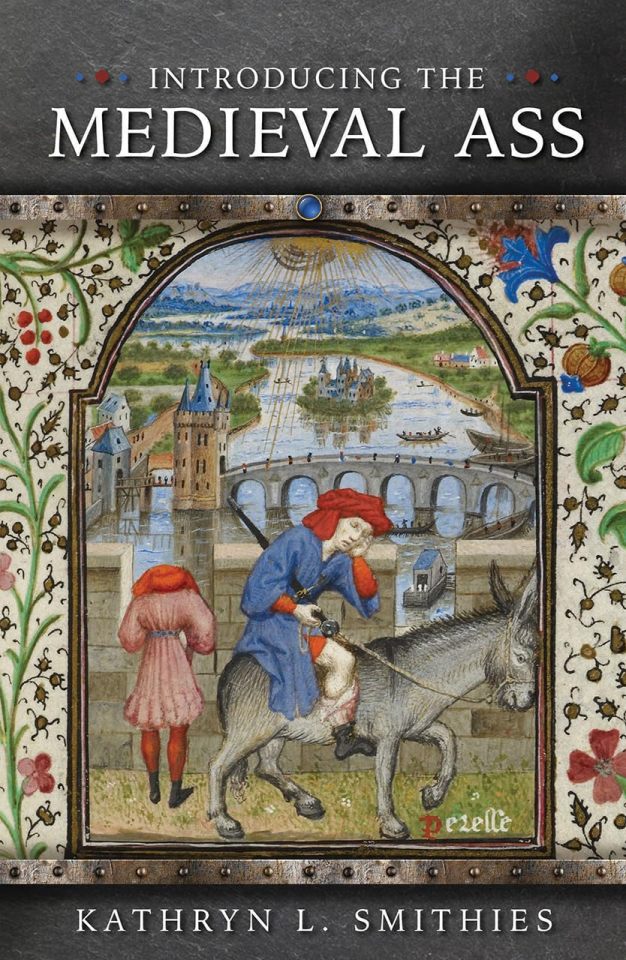
Introducing the Medieval Ass (Medieval Animals series) (2020)
"Introducing the Medieval Ass presents a lucid, accessible, and comprehensive picture of the enormous socioeconomic and cultural significance of the ass, or donkey, in the Middle Ages and beyond. In medieval times, the ass was a vital, utilitarian beast of burden, rather like ubiquitous white delivery vans today. At the same time, however, the ass had a rich, paradoxical reputation. Its hard work was praised but its obstinacy condemned. It exemplified the good Christian, humbly bearing Christ to Jerusalem, but also represented sloth, a mortal sin. It had a potent sexual reputation—in one literary work, an ass had sex with a woman—even as it was simultaneously linked to sterility. Over time, the ass also became synonymous with human idiocy, a comic figure representing foolish peasants, students too dull to learn, and their asinine teachers. This trope of foolishness was so prevalent that by the eighteenth century the word “ass” began to be replaced by “donkey.” Introducing the Medieval Ass offers a wide-ranging account of the importance, and often surprising cultural prevalence, of this common domesticated animal."
#animals in art#animal holiday#donkey#donkeys#World Donkey Day#medieval art#medieval animals#livestock#domesticated animals#animal history#book recommendation#Amazon Associates
9 notes
·
View notes
Text
Unlocked Book of the Month: Pennsylvania Lion or Panther & Felis Catus in Pennsylvania?
Each month we’re highlighting a book available through PSU Press Unlocked, an open access initiative featuring scholarly digital books and journals in the humanities and social sciences.

About our June pick:
This Metalmark volume combines two of Henry W. Shoemaker’s pamphlets, both published by Shoemaker’s Times Tribune Co., which also published his newspaper, the Altoona Tribune. Pennsylvania Lion or Panther, published in 1914, provides a narrative look into the history and romance of Pennsylvania’s mountain lion. Hunting lore and legends mix with local and natural history and Shoemaker’s musings on the disappearance of this once prevalent animal. The pages are dedicated to J. T. Rothrock, whose description of the mountain lion’s haunting cry graces the pages of this text. The second pamphlet, Felis Catus in Pennsylvania?, gathers reports of the 1922 capture of a wildcat in Bucks County, Pennsylvania, which many speculated was a European wildcat.
Read more and access the book here: https://www.psupress.org/books/titles/978-0-271-02267-3.html
See the full list of Unlocked titles here: https://www.psupress.org/unlocked/unlocked_gallery.html
#Pennsylvania#Pennsylvania History#PA History#Panther#Lion#Felis Catus#Henry W. Shoemaker#Henry Shoemaker#Early 1900s#Early 20th Century#Mountain Lion#Animal#Animals#Animal History#Wildcat#Bucks County#Hunting#Lore#Legend#Natural History#Local History#PSU Press Unlocked
0 notes
Text
Smoky, the WWII Therapy Dog
American GI Ed Downey was in New Guinea moving a Jeep out of some mud when he heard a whimper from a nearby foxhole & found a tiny 4lb fully grown Yorkie which he named Smoky. He sold Smoky to Cpl. William Wynne for 2 Aus pounds, the equivalent of $6.44, around $109 in today’s dollars. Wynne kept and trained Smoky, helping her survive for 18 months in the worst war conditions.
Smoky learned more…

View On WordPress
#animal history#smoky#smoky therapy dog#smoky wwii#war dog#william wynne#World War II#wwii#wwii dog#yorkie
0 notes
Text
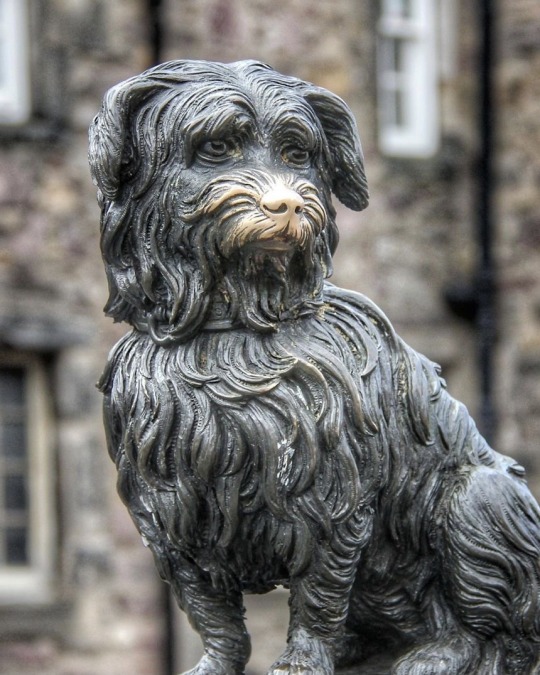
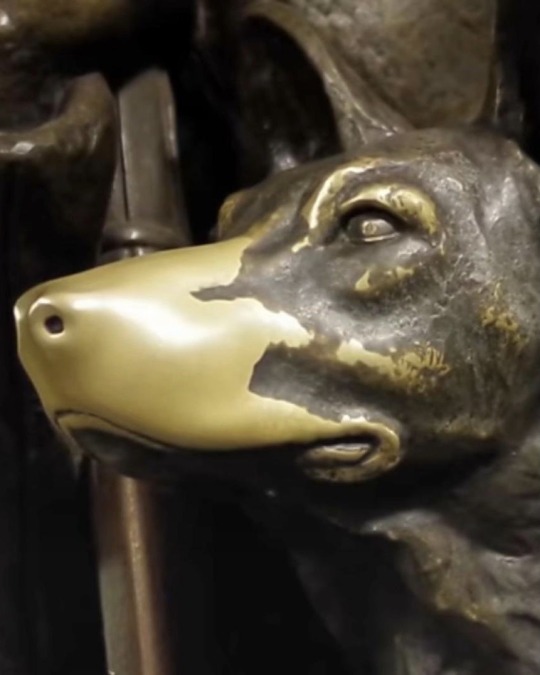
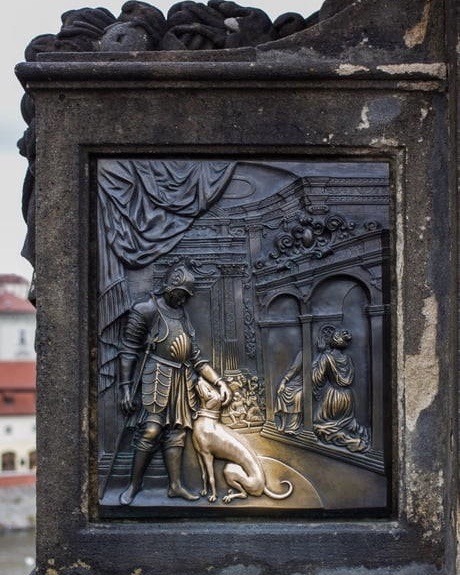

Dog sculptures turned golden from tourists petting them throughout the years
#sculpture#sculptures#art#architecture#classic academia#dark academia#art blog#dogs#traveling#travelcore#travel aesthetic#animals#art history#museumcore#wholesome#dog#museum aesthetic#artist#artblr#art community#classical art#artists#academia aesthetic#aesthetic#pets#pet
30K notes
·
View notes
Text
An archivist found a long forgotten 8mm film reel in an old metal box, marked "Philippines 1942". Thinking it was lost WWII footage, he sent it in to be restored/digitized. When he got the footage back, he found puppies instead
124K notes
·
View notes
Text
A Pig on Trial: Medieval Justice in France, 1386

In 1386, the small town of Falaise in Normandy witnessed one of the most unusual legal proceedings in medieval history—the trial of a pig, accused of attacking a child, fatally.
The courtroom was a spectacle, with the pig (allegedly, but we'd believe) dressed in human clothing, symbolically representing its perceived moral agency. The prosecution treated the case with the gravity afforded to any human criminal, presenting evidence of the attack and calling for justice on behalf of the victim.
Despite any defense efforts, the pig was ultimately found guilty and sentenced to public execution by hanging.
We don't know if the pig was dressed as a human but it'd be easier to imagine.

Illustrations by Nikita Fabbro
Further reading:
"The Criminal Prosecution and Capital Punishment of Animals" by E. P. Evans, 1906 : detailing various cases of animal trials throughout history.
"Animal Trials: A Multidisciplinary Approach" by Peter Dinzelbacher, 2002 : discusses the legal framework and societal implications of such cases.
#animal jam#animal history#falaise#history art#illustration#woodcut#pig#european history#history of france#middle ages#animal art#hog#medieval france#history#fun facts#art#ai experiments#capital punishment#legally blonde#books and reading
1 note
·
View note